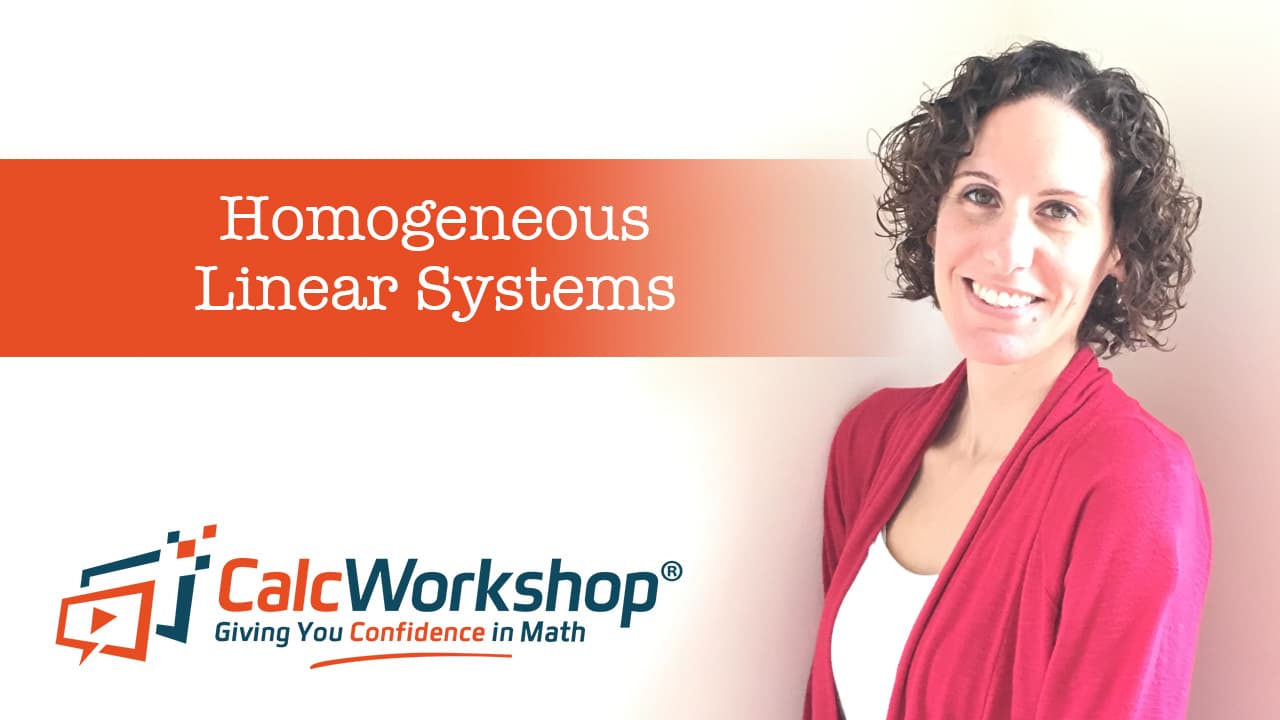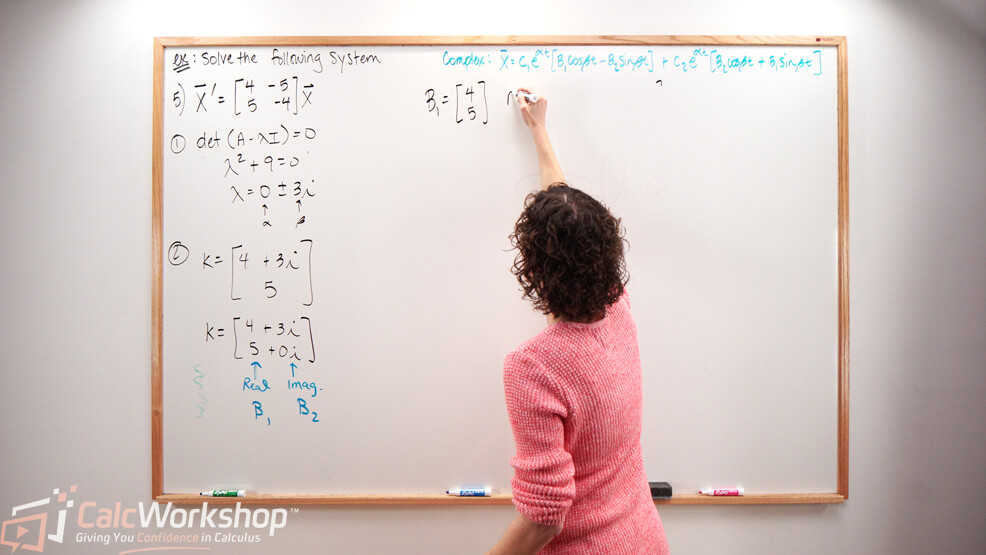What would you do if I asked you to solve a linear system with 100 variables or 100 equations?

Jenn, Founder Calcworkshop®, 15+ Years Experience (Licensed & Certified Teacher)
Scream? Cry?
Perhaps. Or maybe you just need a new tool in your toolbelt.
What new tool?
Matrices!
Why Matrices are Useful for Larger Linear Systems
While the graphing method, substitution method, elimination method, or even the method of differential operators are sufficient for solving linear systems of two or possibly three equations with one, two, or three variables, they are woefully lacking when we increase the number of variables or equations.
In other words, if we have a homogeneous linear system containing
The use of matrices is the preferred choice.
Let’s take a look.
Transforming Linear Systems into Matrix Form
Before we begin, this lesson assumes some familiarity with Linear Algebra concepts. In particular, we will need knowledge of:
If you are a little rusty with these concepts, I will encourage you to review those videos before watching this lesson.
Examples: Converting Linear Systems to Matrix Form
Alright, so to solve a first-order system, we begin by transforming our system of equations into matrix form by recognizing that
Then, the system of linear first-order differential equations can be written as
And if the system is homogeneous, then its matrix form is
Note that this lesson will focus on homogeneous linear systems.
Writing a Homogeneous Linear System in Matrix Form
Okay, so before we can learn how to solve a homogeneous linear system of differential equations, we must know how to write the system in matrix form, so let’s look at an example.
Write the following first-order linear systems in matrix form.
Example 1:
Example 2:
Notice that our first example is nonhomogeneous as we have the column vector
Now it’s time to learn how to create homogeneous linear systems.
How?
Using Eigenvalues and Eigenvectors to Solve Homogeneous Linear Systems
By using Eigenvalues and Eigenvectors.
As we already know, a constant multiple of a solution or a linear combination of solutions is also a solution to a Differential Equation, for they form what is called a Fundamental Set.
With this in mind, we will see that Linearly Independent Eigenvectors provide us with straight-line solutions generated by each different eigenvalue, and according to SOS Math, help us find the solutions of homogeneous linear systems.
Now, to accomplish our goal, we must draw upon our knowledge of higher-order differential equations. In particular, how to write general solutions for when eigenvalues are real and distinct, real and repeated, or complex.
Solving a Homogeneous Linear System with Eigenvalues and Eigenvectors
Let’s see this process in action to help make sense of things.
Solve the following system.
First, let’s transform the system into matrix form.
Now we find our eigenvalues knowing
So, we have two distinct eigenvalues
If
If
Writing the General Solution
Now it’s time to write our general solution as a linear combination of the solution vectors.
See, not so bad!
And don’t worry. The video lesson will help to make sense of this process using step-by-step examples and review the basic concepts of determinants, row reduction, and eigenvectors!
Summary and Next Steps
In this video, you will:
- Learn how to write a linear system in matrix form
- Verify that the vector
- Find the general solution of a system
- Solve initial value problems for:
- Distinct real eigenvalues
- Repeated eigenvalues
- Complex eigenvalues
Let’s jump to it!
Video Tutorial w/ Full Lesson & Detailed Examples

Get access to all the courses and over 450 HD videos with your subscription
Monthly and Yearly Plans Available
Still wondering if CalcWorkshop is right for you?
Take a Tour and find out how a membership can take the struggle out of learning math.